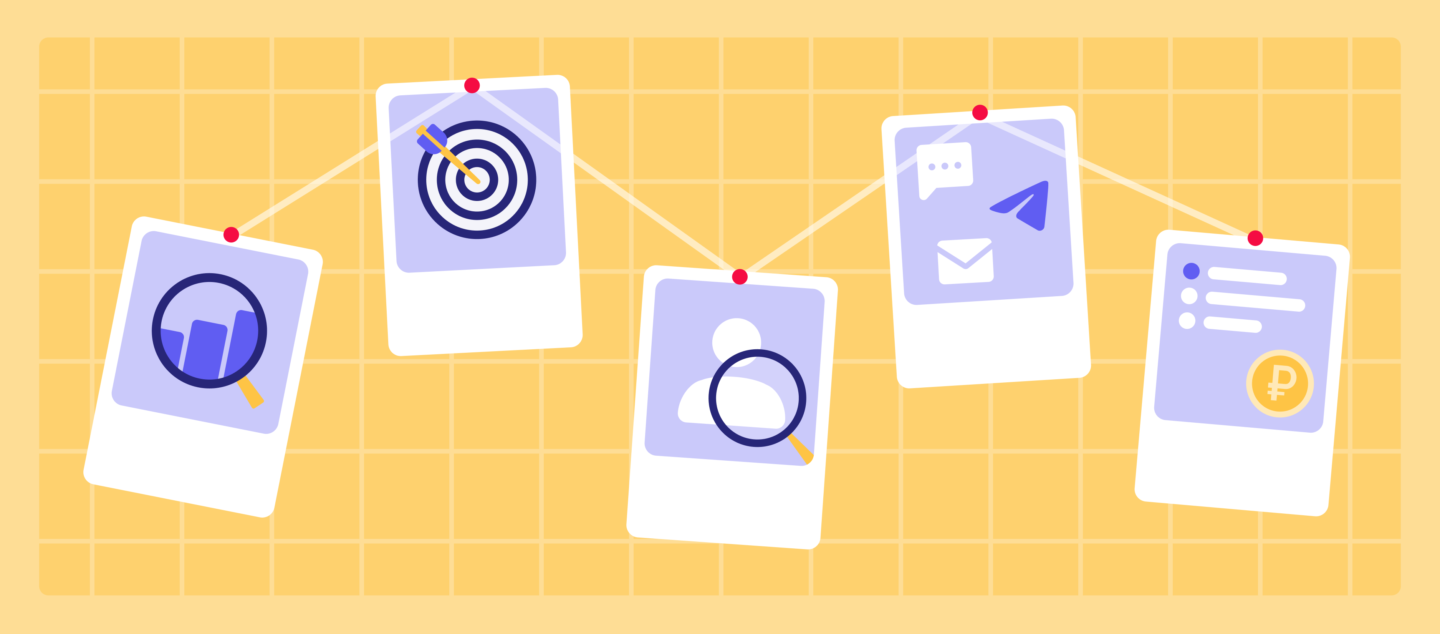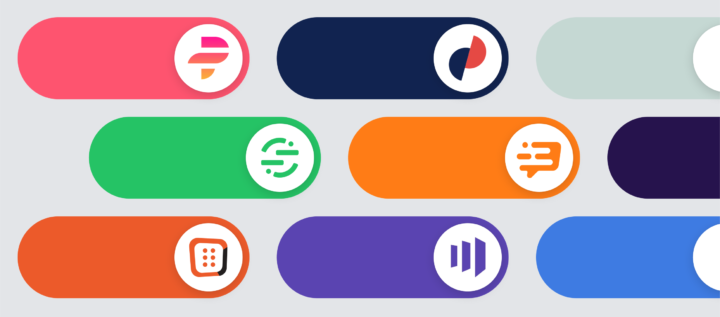Sales Funnel Statistics: Your Ultimate Guide to Boosting Your Company Growth

Growing your inbound sales and demo requests can feel like a guessing game without the right data. That’s why sales funnel statistics are your best friend. By understanding what works in each stage of the funnel, you can optimise your approach and hit your targets.
In this guide, we’ll break down the most important sales funnel stats you need to know as a product company. Ready to benchmark your funnel?
Editor’s Choice: Top Sales Funnel Stats for CEOs and CSOs
As a CEO or CSO, your main focus is driving growth and ensuring that your sales funnel is as efficient as possible. These are the must-know stats that should guide your strategy:
- 79% of leads don’t convert into sales due to poor nurturing. This shows the importance of having a solid lead nurturing system in place to avoid letting potential deals slip away.
- 80% of sales require at least 5 follow-ups after the initial meeting. Don’t expect deals to close immediately — consistency is key.
- 47% of nurtured leads make larger purchases than non-nurtured leads. Investing in lead nurturing not only converts more leads but also increases deal sizes.
- 65% of a company’s business comes from existing customers. Retention and upselling are crucial for revenue growth, especially in SaaS.
- The average landing page conversion rate is 2.35%, but the top 25% convert at 5.31%. If your landing pages aren’t converting, it’s time to optimize.
These stats provide a clear direction: nurture your leads, follow up consistently, and don’t forget about retention and upselling. If you’re focusing too much on acquiring new leads, it’s time to shift some of that attention to nurturing and retaining your current ones.
Why You Need to Track Sales Funnel Statistics
Let’s face it, without tracking sales funnel statistics, you’re flying blind. You might think your funnel is performing, but without numbers to back it up, it’s all guesswork.
Did you know that 79% of leads don’t convert into sales due to poor nurturing? That’s a huge leak in your funnel. But don’t worry — tracking the right stats helps you identify these gaps and plug them.
Here’s a fact that should grab your attention: 50% of leads are qualified but not ready to buy. So, don’t give up on them too soon. The key is to nurture them until they’re ready to pull the trigger.
Tracking your sales funnel stats is like having a map — if you don’t know where you are, it’s hard to get where you’re going.
Read also: Master the Inverted Sales Funnel: 7 Steps to Boost Conversions Fast
General Statistics on Sales Funnels: What You Need to Know as a SaaS Leader
When executed properly, sales funnels have the potential to generate massive revenue for businesses. But here’s the million-dollar question: are marketers actually optimizing their funnels to hit those revenue targets? Let’s explore the numbers that shed light on the challenges, opportunities, and buyer behaviors impacting sales funnels today.
These sales funnel statistics hold the key to understanding how businesses can fine-tune their approach to generate better leads, increase conversions, and ultimately, drive growth.
How many marketers prioritize improving their sales funnels?
A staggering 48% of marketers stated that improving the efficiency of their sales funnel is their top priority. That’s nearly half of marketers focusing on making their funnels work better — not surprising, considering how much potential revenue is at stake.
Are visitors ready to buy when they land on a website?
Nope! In fact, 96% of visitors aren’t ready to make a purchase when they first land on a website. But don’t worry, this doesn’t mean they’re not valuable. These visitors are open to sharing their contact information in exchange for content that’s useful to them. So, providing value upfront should be your game plan.
What’s the biggest hurdle for marketers?
It’s all about generating leads. For 61% of marketers, generating leads is their biggest challenge. More than half of marketing professionals are struggling to fill the top of the funnel, which makes sense when you consider the intense competition for attention in today’s digital landscape.
How much information should you ask for in signup forms?
It turns out that asking for too much info can hurt your conversions. The sweet spot? Ask for no more than three pieces of information. Doing so can increase your conversion rate by 10%. Keep it simple — asking for just the essentials makes a big difference.
Are B2B buyers spending more time researching purchases?
Yes, they are. 47% of B2B buyers are spending significantly more time researching their purchases than they did before. It’s a reflection of how critical it is to offer valuable, well-researched content to potential buyers. They want to make informed decisions, and your content should help guide them.
Are more people involved in B2B purchasing decisions?
Absolutely. 38% of B2B buyers said they now involve more team members when making purchasing decisions. As decision-making processes become more collaborative, it’s vital to tailor your messaging to multiple stakeholders.
What influences buyers when making a purchase?
In today’s digital world, buyers have plenty of sources to help them choose the right product. Here’s what we found in Demand Gen Report:
- 79% of buyers said that a web search influenced their product choice.
- Another 79% said that a business’s website content was key in making a final decision.
- 50% of buyers were influenced by social media during their product selection.
- 55% of buyers pointed to white papers as a critical factor in their purchasing process.
Top-of-Funnel: How to Generate Awareness That Converts
Your sales funnel starts at the top, and it’s all about awareness. At this stage, your prospects are just becoming aware of your product and considering if it’s worth their time and attention.
But here’s the thing — 63% of people requesting information won’t make a purchase for at least 3 months. That’s a long time to nurture them without overwhelming them with constant emails or calls. This is where a solid content marketing strategy comes into play — providing value consistently over time.
You need to nurture your leads consistently, and here’s the good news: 80% of marketing automation users say it helps them generate more leads.
What does this mean for your business? You need to be patient, but also proactive. Keep offering helpful content and personalized engagement to keep those leads warm until they’re ready to move down the funnel.
Key Top-of-Funnel Stats:
- Landing page conversion rates average at 2.35%, but the top 25% convert at 5.31% or more (persuasion-nation.com).
- Lead conversion rates for B2B typically range from 1% to 2%.
- 50% of leads are qualified but not ready to buy.
Double your sales funnel conversion
with Dashly conversational marketing tools
⭐ Engage prospects on the website
⭐ Segment them with data tracking
⭐ Nurture to conversion with automated messaging across channels
Mid-Funnel: Boost Engagement and Nurture Leads
The mid-funnel is where your potential customers are aware of your product, but they’re still deciding if they want to commit. It’s critical to keep their interest and engage them meaningfully during this stage.
Here’s something to think about: 60% of customers will say no at least four times before they say yes. So don’t give up after the first rejection. Persistence pays off — but don’t spam. There’s a delicate balance between being persistent and being annoying.
A personalized approach to nurturing can make all the difference. Studies show that 47% of nurtured leads make larger purchases than their non-nurtured counterparts. In fact, nurturing your leads with timely and relevant content or offers can significantly increase the chances of a conversion.
Another key metric to keep in mind is this: Lead nurturing emails get 4 to 10 times the response rate compared to standard email blasts. If you’re still sending generic, one-size-fits-all emails to your leads, you’re missing out on this engagement opportunity.
Key Mid-Funnel Stats:
- It takes 6 to 8 touches to generate a viable sales lead.
- 47% of nurtured leads make larger purchases than non-nurtured leads.
- Lead nurturing emails see 4 to 10 times the response rate of standard email marketing campaigns.
Bottom-of-Funnel: Increase Conversions and Retain Customers
The bottom of your sales funnel is where the magic happens — this is where deals are closed, and sales are made. But it’s also the part of the funnel where things can fall apart. You’ve done all the work to nurture your leads, but now comes the hard part — converting them into paying customers.
Here’s something that might surprise you: 80% of sales require at least 5 follow-up calls after the initial meeting. That’s right — most sales aren’t closed on the first call. If your sales team isn’t following up diligently, you’re leaving money on the table.
What about retaining customers? This stat should grab your attention: 65% of a company’s business comes from existing customers. If you’re only focusing on acquiring new leads, you’re missing out on opportunities to upsell or cross-sell to your current customers. It’s easier and cheaper to keep a current customer than to acquire a new one.
Retention should be a key focus, especially in SaaS, where the subscription model is everything. Your bottom-of-funnel strategy should include not only converting leads into customers but also keeping those customers happy for the long term.
Key Bottom-of-Funnel Stats:
- The average win rate for SaaS companies is around 20%.
- 80% of sales require at least 5 follow-ups.
- 65% of business comes from existing customers.
- Upselling to existing customers is 68% more cost-effective than acquiring new ones.
Key Sales Funnel Benchmarks for SaaS Companies
Benchmarks are critical to understanding how well your sales funnel is performing. How does your company stack up against the competition? Let’s look at some industry-standard benchmarks.
For SaaS companies, a 5-10% trial-to-paid conversion rate is considered healthy. If your conversion rate is lower than 5%, you may need to rework your onboarding or nurturing processes. If it’s higher than 10%, you’re probably doing something right, so keep it up!
Let’s also talk about landing pages. The average landing page conversion rate across industries is 2.35%, but the top 25% are converting at 5.31% or more. This means if your landing page conversion rate is below 2%, it’s time to rethink your copy, design, or offer.
Another interesting stat: only 10% of B2B companies have a formal lead nurturing program. If you don’t have one, you could be missing out on a huge opportunity to nurture leads through your funnel.
Industry Benchmarks:
- 5-10% trial-to-paid conversion rate is healthy for SaaS companies.
- The average landing page conversion rate is 2.35%, but the top 25% convert at 5.31% or higher.
- Only 10% of B2B companies have a formal lead nurturing program.
How to Use These Sales Funnel Stats to Grow Your Company
Now that you’re armed with all this data, what’s next? How do you put these sales funnel stats to work for your company? Here’s an actionable plan.
- Prioritize nurturing. With 47% of nurtured leads making larger purchases, it’s crucial to focus on personalized engagement.
- Follow-up consistently. Remember, 80% of sales require at least 5 follow-up calls. Don’t give up after one or two.
- Focus on retention. With 65% of your revenue coming from existing customers, keeping them happy should be a priority. Use upselling and cross-selling techniques to drive more revenue from your current base.
- Track and optimize your landing pages. If your landing page conversion rate is below the industry average of 2.35%, test different copy, designs, and calls to action.
Ultimately, improving your sales funnel isn’t just about getting more leads. It’s about converting the right leads and nurturing them until they’re ready to buy.
By understanding these sales funnel statistics, you’ll be better equipped to optimize your sales process, from the top of the funnel to the bottom. And with the right benchmarks in place, scaling your SaaS company will feel more achievable than ever.
Ready to see those demo requests and inbound sales skyrocket? 🚀
Double your sales funnel conversion
with Dashly conversational marketing tools
⭐ Engage prospects on the website
⭐ Segment them with data tracking
⭐ Nurture to conversion with automated messaging across channels
FAQs on sales funnel stats
What is the average conversion rate for a sales funnel?
The average conversion rate for a sales funnel landing page is 2.35%, but top-performing funnels can reach a conversion rate of 5.31% or more. For SaaS companies, a trial-to-sale conversion rate of 5-10% is considered healthy.
What is the biggest challenge for marketers when it comes to sales funnels?
61% of marketers say their biggest challenge is generating leads for their sales funnel. Consistently bringing in high-quality leads is crucial to improving funnel metrics and hitting sales targets.
How many visitors are ready to make a sale when they land on a website?
A: 96% of visitors are not ready to make a sale when they land on a website. However, many are willing to provide contact details for valuable content, which is critical for funnel performance.
How many touchpoints are needed to convert a lead into a sale?
A: It typically takes 6 to 8 touchpoints to move a lead through the sales funnel and generate a viable sale. Regular follow-ups improve your funnel metrics and help increase conversion stats.
Why is lead nurturing important in the sales funnel?
47% of nurtured leads make larger sales compared to non-nurtured leads. Focusing on lead nurturing boosts funnel performance, increases sales conversion rates, and improves overall funnel metrics.
How many follow-ups are needed to close a sale?
80% of sales require at least 5 follow-up calls after the first meeting. This demonstrates that consistency is key in moving leads through the sales funnel and closing a sale.
The Best Sales Funnel Software Top 15 Tools for Every Business
How does content influence buyers in the funnel?
79% of buyers say that website content is crucial in their product decision-making process, and 55% are influenced by white papers. Quality content drives funnel metrics and helps convert leads into sales.
Read also:
Mastering sales funnel analysis: step-by-step guide, tools, and examples
Ultimate guide to an AI sales funnel: the best tips, tools and common mistakes to avoid





